Boba originate in Taiwan in the 1980s, this trendy beverage has gained popularity worldwide, offering a delightful combination of tea, milk, and chewy tapioca pearls. But what does boba taste like? Exploring this question opens up a world of diverse and enticing flavors that cater to a wide range of preferences.
From creamy and sweet to refreshing and fruity, the taste of boba is a delightful adventure waiting to be explored. Join us as we delve into the tantalizing world of boba and uncover the various flavors that make it a beloved drink for millions.
Boba, also known as tapioca pearls, are the chewy balls that are found in bubble tea. They have a slightly sweet, neutral taste on their own. The flavor of boba can vary depending on the type of boba and the ingredients used to make it.
Does boba have a flavor?
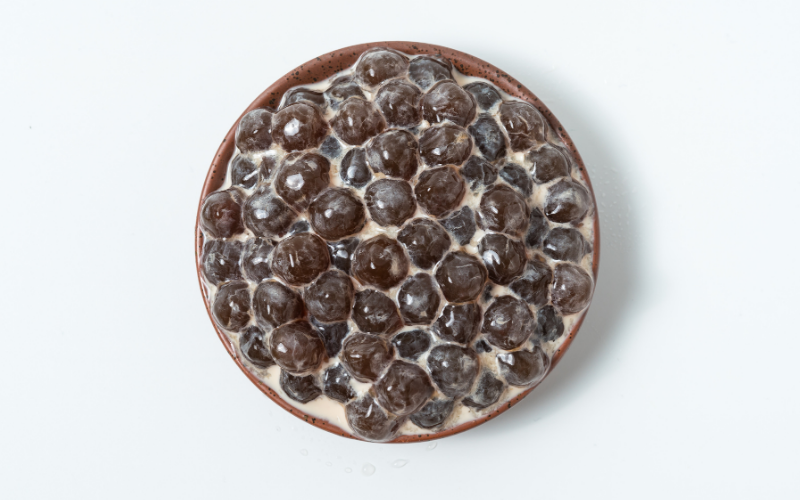
The boba pearls themselves do not have a strong or distinct flavor. They are primarily made from tapioca starch or other similar ingredients, which are relatively neutral in taste. However, the boba pearls have a unique texture, being soft and chewy, which adds to the overall enjoyment of boba tea.
On the other hand, popping boba, also known as juice balls, have a thin, gel-like outer layer that bursts or pops when bitten, releasing a flavorful liquid filling. Popping boba provides a different sensory experience compared to the chewiness of regular boba.
Popping boba vs Tapioca boba: The difference between them
| Popping Boba | Tapioca | |
|---|---|---|
| Texture | Soft, gel-like exterior | Chewy, gummy consistency |
| Appearance | Small, round balls | Larger, spherical balls |
| Flavor options | Wide variety available | Usually plain or sweetened |
| Bursting sensation | Pops and releases juice/filling | No bursting sensation |
| Cooking method | Typically boiled | Boiled or soaked |
| Origin | Originally from Taiwan | Traditional Asian ingredient |
| Usage | Popular in bubble tea | Commonly used in bubble tea, desserts, and drinks |
| Variations | Can contain fruit juice, yogurt, or other fillings | Can be flavored or colored |
| Calorie content | Varies based on filling and sweetening | Typically high in calories due to added sugar |
| Dietary restrictions | Usually gluten-free and vegan-friendly | Not suitable for some dietary restrictions due to gluten and potential animal products |
Does boba taste better hot or cold?
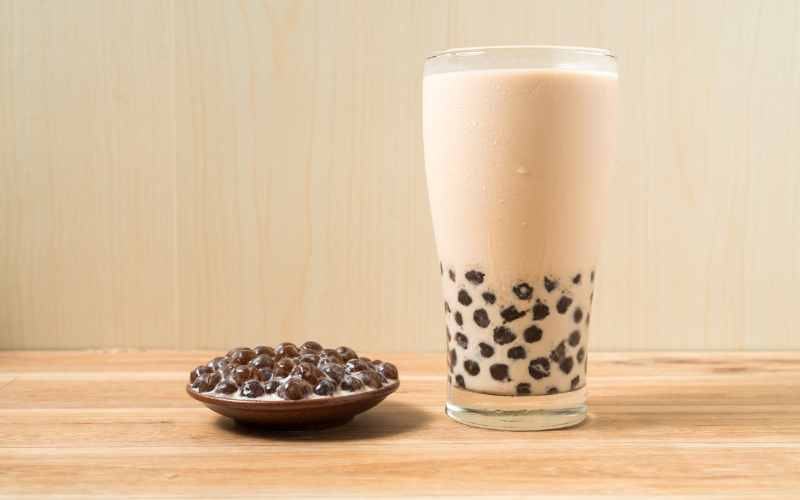
The preference for the temperature of boba can vary among individuals. Traditionally, boba tea is served cold or chilled, which is popular and refreshing, especially during hot weather. The cold temperature enhances the overall experience of the drink. However, some people may also enjoy hot boba tea, particularly during colder months, as the warmth can provide a comforting sensation. Ultimately, whether boba tastes better hot or cold is subjective and depends on personal preference.
Do you eat or chew boba?
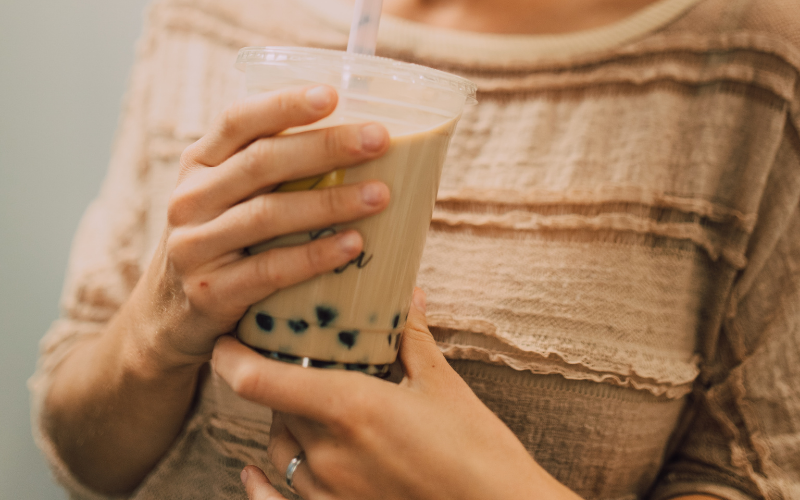
When enjoying boba, it is common to chew it. The tapioca pearls used in boba tea have a chewy texture, and part of the experience is biting into the pearls while sipping the drink. The chewiness adds a unique element to the overall texture and enjoyment of the boba tea.
You can eat straight boba, which refers to consuming the tapioca pearls without them being mixed into a drink. While boba pearls are typically used as an ingredient in boba tea, some people enjoy snacking on the chewy pearls on their own. However, it’s important to note that the pearls are usually cooked and sweetened, so they may have a different taste and texture compared to other types of plain tapioca pearls.
Is boba good or bad for you?
Boba itself is generally considered safe to consume in moderation. However, the health impact of boba tea depends on various factors, such as the type and quantity of ingredients used, including sweeteners and additives. Boba tea can be high in calories, sugar, and carbohydrates, so frequent consumption may contribute to weight gain or other health issues. It’s best to enjoy boba tea as an occasional treat and consider healthier alternatives or options with reduced sugar if you have specific dietary concerns.
What to note when trying boba?
The boba pearls can be quite chewy, so if you are not used to eating chewy foods, you may want to start with a smaller size.
The sweetness of bubble tea can vary depending on the shop. If you are not a fan of sweet drinks, you can ask for less sugar.
Boba tea can be a refreshing and delicious treat. If you are looking for a new drink to try, I encourage you to give boba a try.
Why does boba taste bad?
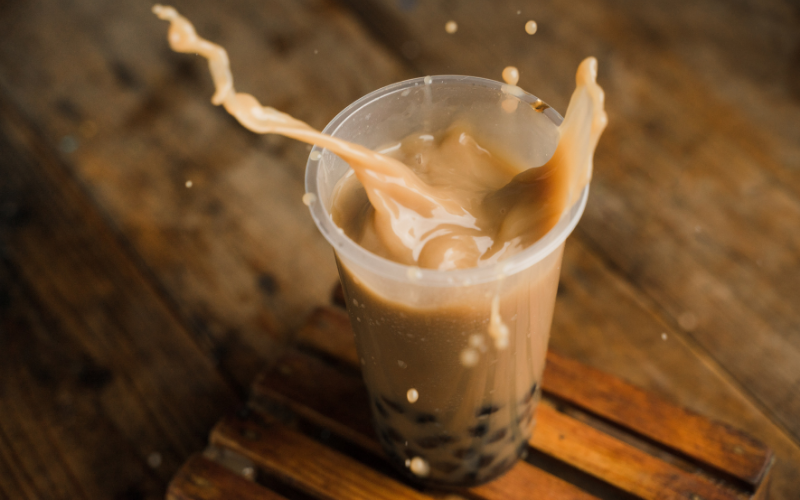
Boba tea can taste bad for a number of reasons, including:
- Overcooked or undercooked boba pearls. Boba pearls are made from tapioca starch, and they have a chewy texture when cooked correctly. However, if they are overcooked, they can become hard and rubbery. If they are undercooked, they can be mushy and tasteless.
- Unseasoned boba pearls. Boba pearls are typically sweetened with sugar, but they can also be flavored with other ingredients, such as honey, syrup, or fruit juice. If the boba pearls are not seasoned, they will have a bland taste.
- Stale or expired boba pearls. Boba pearls can spoil quickly, so it is important to buy them from a reputable source and consume them within a few days of purchase. If the boba pearls are stale or expired, they will have a sour or bitter taste.
- Poor-quality tea or milk. The quality of the tea and milk used in boba tea can also affect the taste. If the tea is weak or the milk is sour, the boba tea will not taste good.
- Personal taste preferences. Some people simply do not like the taste of boba pearls, no matter how well they are cooked or seasoned. If you do not like the taste of boba pearls, there is no point in trying to force yourself to enjoy boba tea.
The base of bubble tea (boba tea)
- Tea: Traditional boba tea is often made with black or green tea as the base. The aroma of the tea leaves can add a fragrant and slightly earthy note to the beverage.
- Milk: Many boba tea variations incorporate milk or non-dairy alternatives such as almond or oat milk. The presence of milk can contribute a creamy and subtle sweet aroma.
- Sweeteners: Boba tea often contains sweeteners like sugar or syrups, which can impart a sugary scent to the drink. Brown sugar, honey, or flavored syrups may provide additional aromatic notes.
- Flavorings: If the boba tea is flavored, such as with fruit syrups or extracts, the aroma will be influenced by those specific ingredients. For example, a lychee-flavored boba tea may have a fruity and floral scent, while a matcha-flavored boba tea can have a distinct earthy aroma.
Simple tapioca boba recipe

Ingredients:
- 1/2 cup dried tapioca pearls
- 4 cups water
- 1/4 cup granulated sugar (adjust to taste)
- Your choice of tea (black tea or green tea)
- Milk (optional)
- Ice cubes
Instructions:
- Start by cooking the tapioca pearls. Bring the water to a boil in a saucepan. Add the tapioca pearls and stir gently to prevent sticking. Cook for about 15 minutes or until the pearls become soft and chewy.
- While the pearls are cooking, brew your choice of tea according to the package instructions. If you prefer milk tea, you can steep the tea bags in milk instead of water.
- Once the tapioca pearls are cooked, drain them and rinse with cold water to remove excess starch.
- In a separate small saucepan, dissolve the sugar in 1/4 cup of water over low heat, creating a simple syrup.
- Add the cooked tapioca pearls to the simple syrup and let them soak for a few minutes. This step adds sweetness and flavor to the pearls.
- Prepare your serving glasses by adding a handful of ice cubes.
- Pour the brewed tea (or milk tea) over the ice cubes, leaving room for the tapioca pearls.
- Using a slotted spoon, transfer the soaked tapioca pearls into the serving glasses, distributing them evenly.
- Give the drink a quick stir to combine the flavors, and you’re ready to enjoy your homemade boba!
Some common boba tea flavors
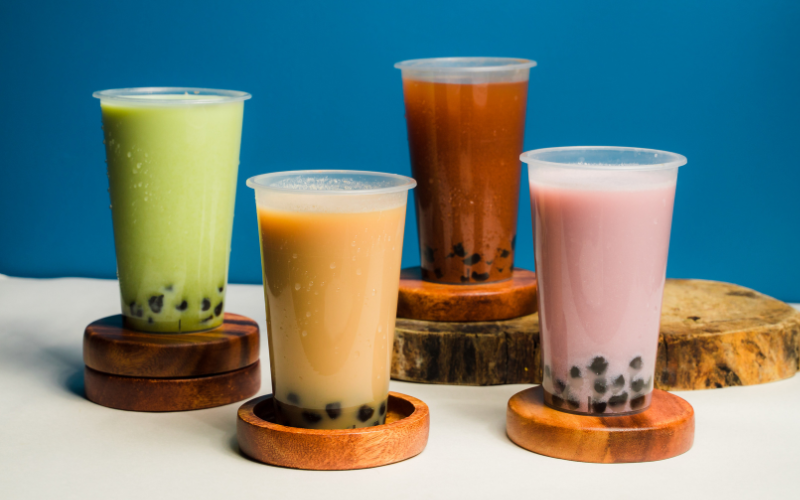
The flavor of boba tea primarily comes from the tea base, milk or non-dairy alternatives, sweeteners, and flavorings added to the drink.
- Black Tea Boba: This is the most common flavor of boba. Black tea boba is made using black tea leaves, which impart a bold and robust flavor. The boba pearls themselves do not have a distinct taste but take on the flavor of the black tea they are soaked in. Black tea boba pairs well with milk, creating a classic combination commonly found in traditional milk teas.
- Brown Sugar Boba: Brown sugar boba is known for its indulgent sweetness and caramel-like taste. The boba pearls are cooked in a mixture of brown sugar and water, giving them a rich, molasses-like flavor. When added to milk tea or other beverages, brown sugar boba adds a pleasant sweetness and a slightly chewy texture.
- Lychee: Lychee is a tropical fruit with a sweet and floral flavor. Lychee boba typically has a delicate and refreshing taste. The boba pearls are usually infused with lychee syrup, giving them a subtle lychee flavor that complements the overall sweetness of the drink.
- Ube: Ube is a purple yam commonly used in Filipino cuisine. Ube boba has a unique and distinct flavor with subtle hints of nuttiness and sweetness. It has a rich, earthy taste and a vibrant purple color. Ube-flavored boba drinks are popular for their visually appealing appearance and delicious flavor.
- Honeydew: Honeydew is a melon with a light and subtly sweet flavor. Honeydew boba drinks feature boba pearls infused with honeydew syrup, resulting in a refreshing and mildly fruity taste. The boba pearls have a greenish hue to match the honeydew flavor, providing a delightful and refreshing beverage experience.
- Coffee: Coffee-flavored boba is perfect for coffee lovers. The boba pearls are typically soaked or cooked in a mixture that includes coffee, giving them a distinct coffee flavor. When added to milk tea or a coffee-based drink, coffee boba adds a rich and aromatic element, providing a unique twist to traditional boba beverages.
- Matcha: Matcha is a finely ground powdered green tea with a vibrant and earthy taste. Matcha boba drinks feature boba pearls infused with matcha powder or matcha syrup. The result is a delightful combination of the slightly bitter and grassy notes of matcha with the sweet and chewy texture of the boba pearls, creating a well-balanced and popular beverage option.
What is the best taste of boba tea?
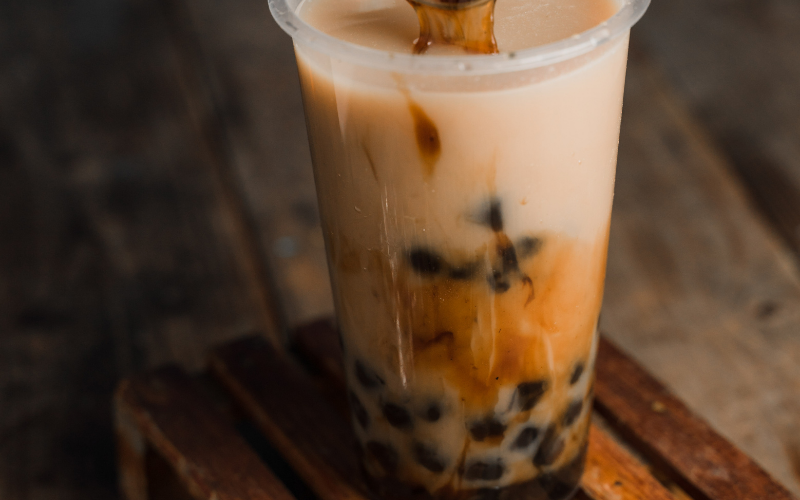
The best taste of boba tea is subjective and can vary depending on personal preference. Some people may prefer the bold and robust flavor of black tea boba, while others might enjoy the indulgent sweetness of brown sugar boba.
The refreshing and delicate taste of lychee boba, the unique flavor of ube boba, or the light and subtly sweet flavor of honeydew boba may appeal to different individuals.
Coffee lovers might find the rich and aromatic taste of coffee boba enticing, while fans of matcha might enjoy the vibrant and earthy flavors in matcha boba.
Ultimately, the best taste of boba tea is the one that you enjoy the most based on your own taste preferences.
FAQs
Why does boba taste like raisins?
Boba doesn’t inherently taste like raisins. The chewy tapioca pearls used in boba tea have a mild, slightly sweet flavor. If your boba tastes like raisins, it could be due to the specific ingredients or preparation method used by the tea shop you visited.
Why does boba taste like soap?
Boba should not taste like soap. The taste of boba can vary depending on the ingredients and preparation methods used. If your boba has a soapy taste, it could be due to improper cleaning of utensils or a specific ingredient used in the preparation. It’s best to reach out to the tea shop or try boba from different places to determine the cause of the unusual taste.
Why does boba taste like coffee?
Boba itself doesn’t taste like coffee as it’s made from tapioca pearls, which have a neutral flavor. However, if you’re referring to boba drinks with coffee flavors, it’s because coffee-based drinks, such as boba coffee or coffee milk tea, incorporate coffee as one of the main ingredients, resulting in a distinct coffee taste.
Why does my boba taste like perfume?
If your boba tastes like perfume, it could be due to several factors. One possibility is that the tea shop used a flavored syrup or ingredient with an artificial or strong fragrance, which may resemble the scent of perfume. Another reason could be cross-contamination, where the boba pearls or utensils came into contact with a fragrant substance. It’s advisable to inform the tea shop about the issue, as it may help them identify and resolve the problem.
Conclusion
The question “What does boba taste like?” unveils a world of delectable flavors and textures that have captured the hearts of tea enthusiasts worldwide. Boba offers a delightful balance of sweetness, creaminess, and chewiness, making it a unique and enjoyable beverage experience.
From classic flavors like milk tea and taro to more adventurous options like mango or matcha, boba caters to a wide range of taste preferences. Whether you’re a fan of fruit-infused teas or crave the indulgent combination of milk and tapioca pearls, boba is sure to offer a refreshing and satisfying treat.
So, the next time you come across a boba shop, don’t hesitate to embark on a flavorful journey and discover the wonderful taste of this beloved drink.